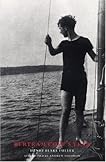
Beowulf
translated by Seamus Heaney
"Often, for undaunted courage,
fate spares the
man it has not already marked." (572-573)
"His warrior band did what he bade them
when he laid down the law among the Danes:
they shouldered him out to the sea’s flood,
the chief they revered who had long ruled them."
For Heaney the whole poem is bordered by yet related to the beyond, by which he means both the immanent and the imminent, ‘unknowable but certain’. He stresses that the queer sounds of Beowulf to modern ears is not merely the result of our distance in time from that epic world (the dragons, barrows, and boar-shapes flashing over golden cheek-guards). Rather the poem’s difference (perhaps shared with similar sagas) lies in its ‘mythic potency’:
"Like Shield Sheafson… [the poem] arrives from somewhere beyond the
known bourne of our experience, and having fulfilled its purpose (again
like Shield) it passes once more into the beyond."
Rereading the poem in this translation was a delight even though I would still recommend the fine translation by Burton Raffel that I read in the early nineties. I intend to return to this poem, but plan to seek out the new version by Neil Gaiman – that is sure to be yet a new way to experience this great medieval epic.
Beowulf trans. by Seamus Heaney. W. W. Norton, 2001.



















